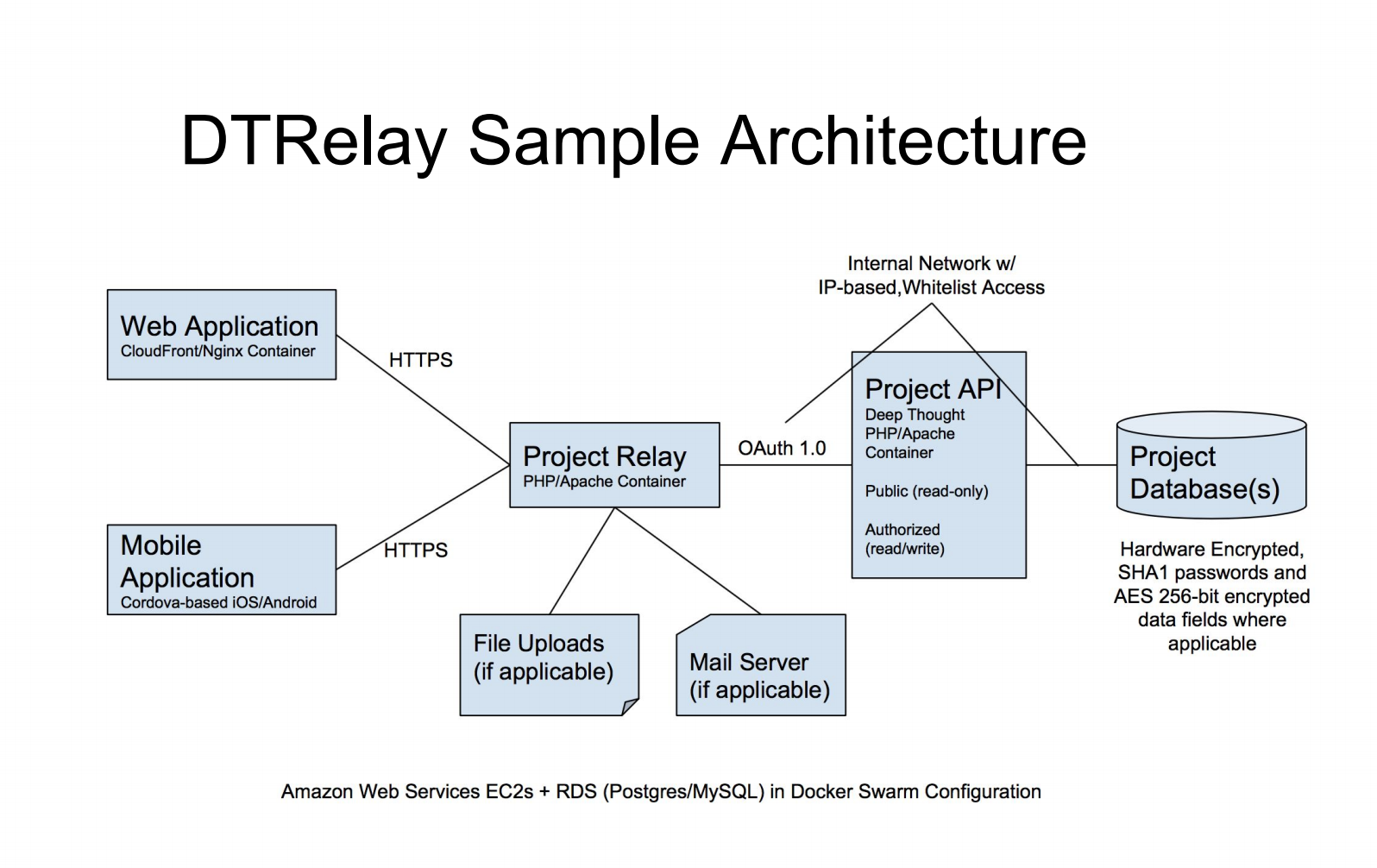DTRelay mitigates developer errors, and can do much of the cyber security work automatically.
All you have to do is put DTRelay in front of the API, and it protects the communication between the client and the API for you.
DTRelay eliminates human error by taking care of the security processes automatically. For example, the OAuth authentication process is inherent to DTRelay, and so are many other processes that require secure transactions.
DTRelay never exposes the OAuth 2 bearer tokens, so those tokens are never available to be compromised by the developers.
DTRelay Standard Explanation:
DTRelay protects communications from a device (including mobile) to a company’s API. DTRelay is patent-pending middleware that provides authentication without exposing client-side tokens where hacking occurs.
How it works:
DTRelay establishes a shared-secret between the client and server, and gives you secure tokens in JavaScript-Based Apps. It encrypts parameters, and uses the secret to transparently sign each request, guaranteeing the authenticity of the sender.
Why it is important:
DTRelay makes OAuth apps safer. Using DTRelay, it fixes vulnerabilities in the widely used OAuth protocols by never sharing keys, tokens, or other sensitive data with client applications. DTRelay works even when HTTPS is compromised.
OAuth tokens are stored in DTRelay and never sent to the client application, therefore, DTRelay can be used as a security layer on top of OAuth to prevent the exposure of the access token during requests.
Watch this 9-min video to see how it works
Find Out DTRelay’s Solution To Current Hacking and Security Issues:
- How DTRelay Fixes Known Security Vulnerabilities
- Learn How DTRelay Can Prevent A Spoofing Attack
- The Solution To Personal Online Data Privacy Policies
- Web Applications Suffer From High-Severity Vulnerabilities Without DTRelay
- How To Prevent A Man In The Middle Attack Using DTRelay
- The Results of Ignoring That Browser SSL Certificate Warning

